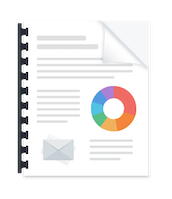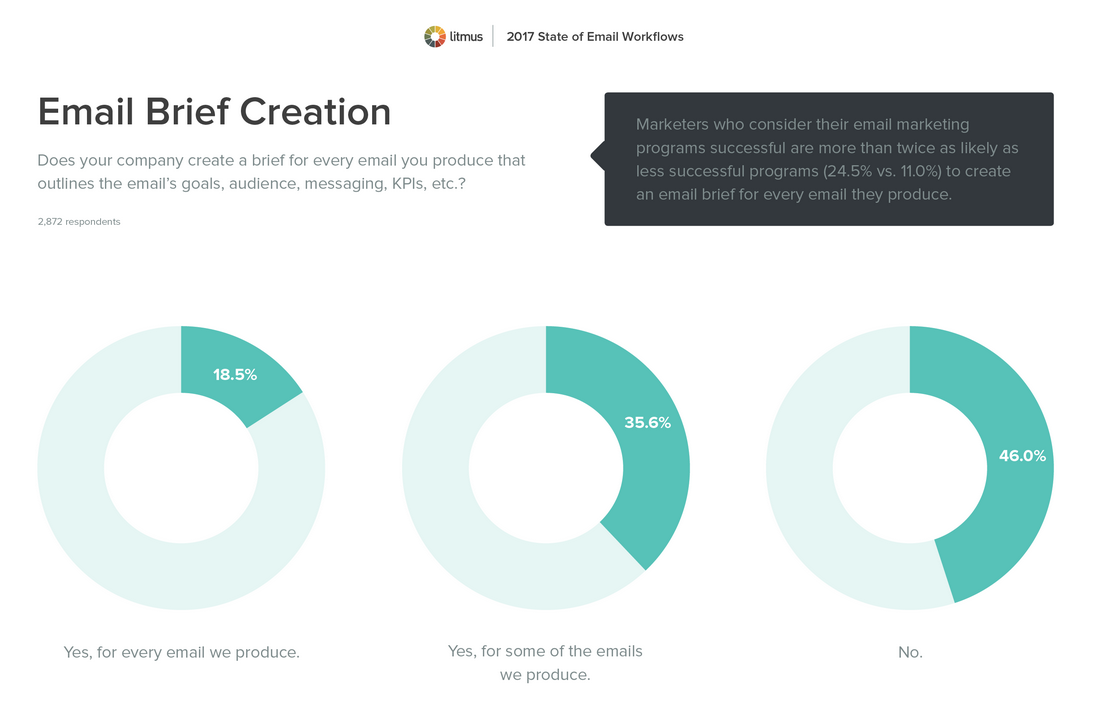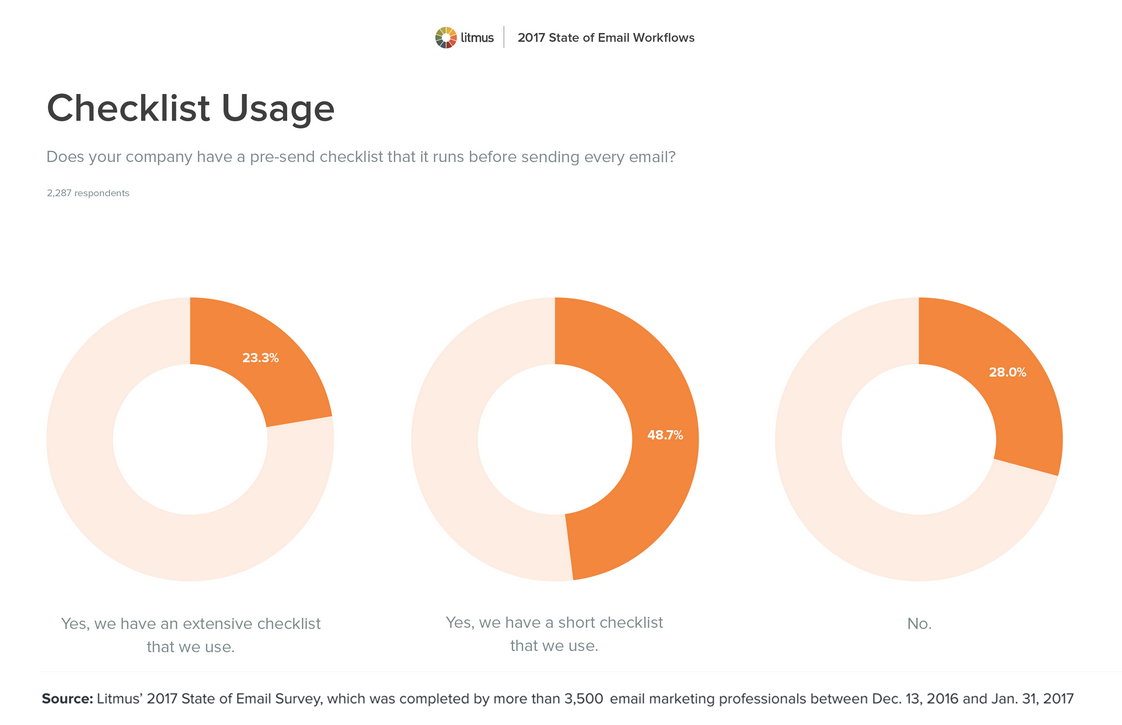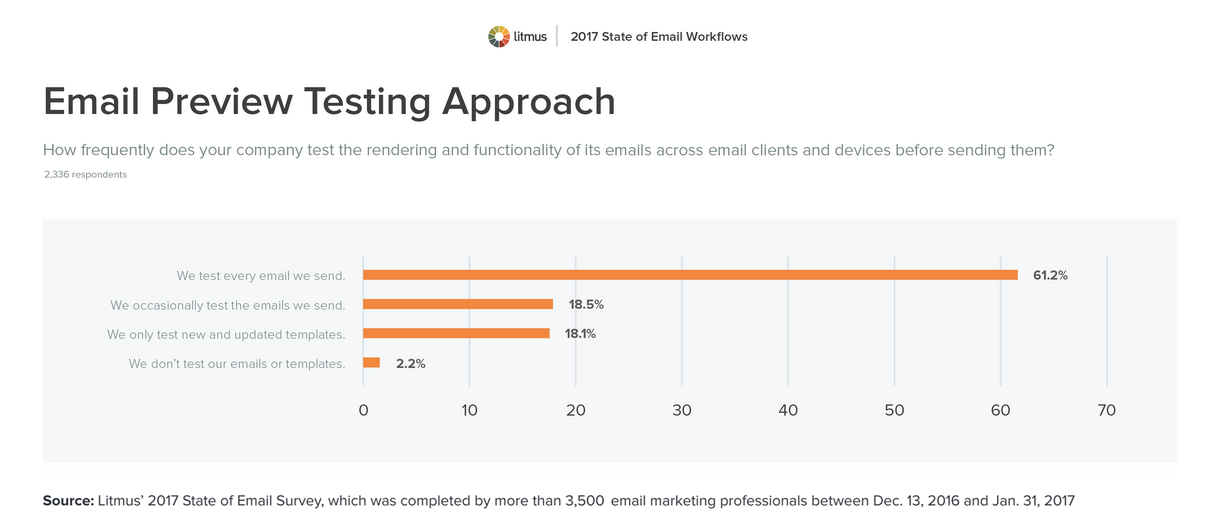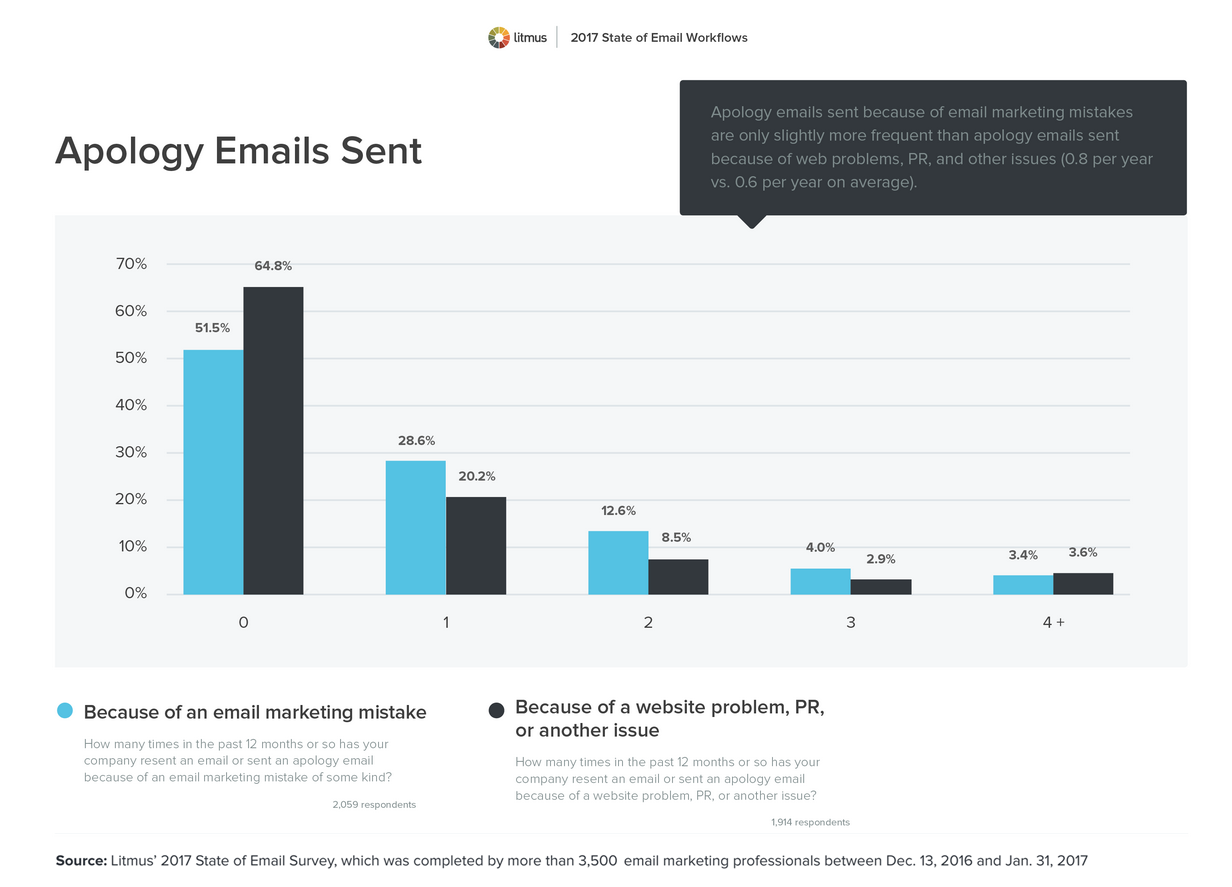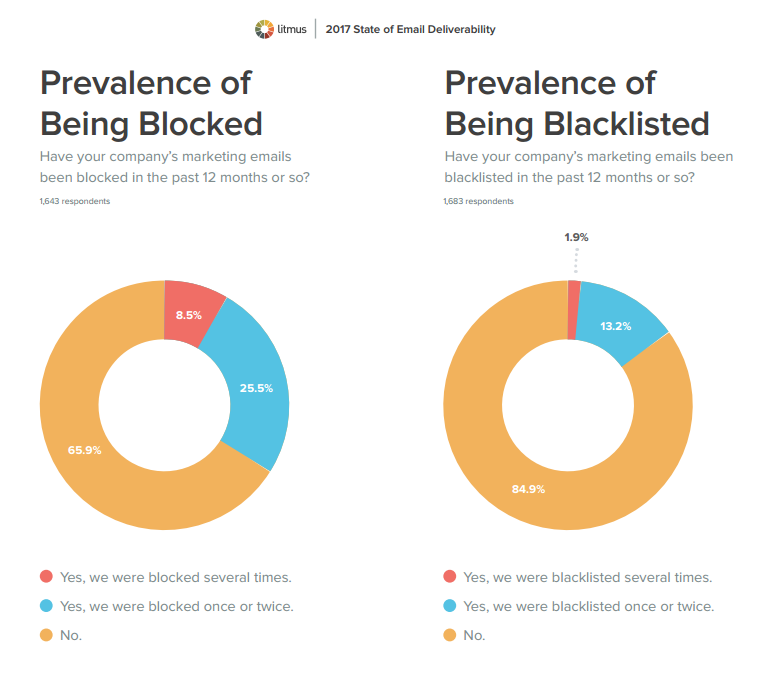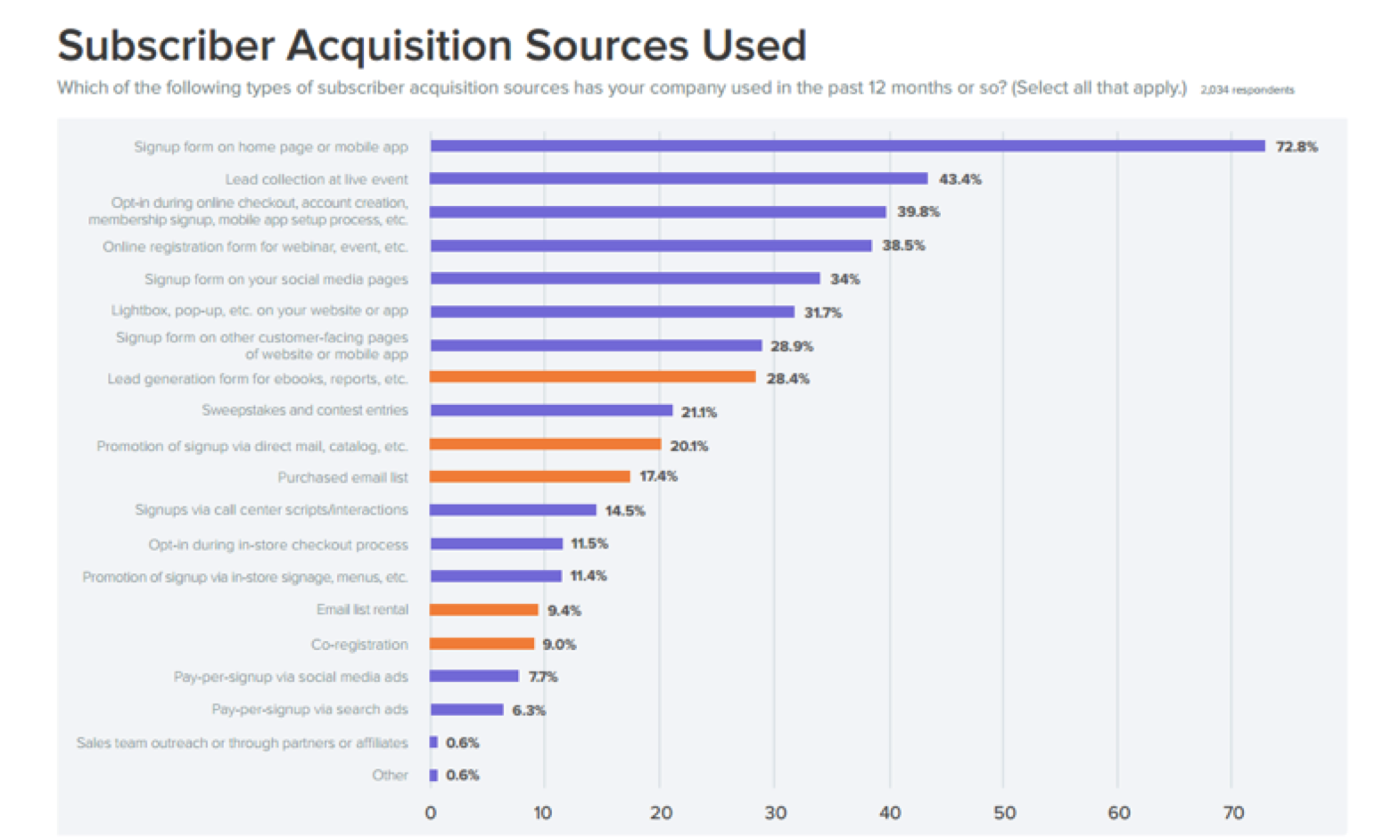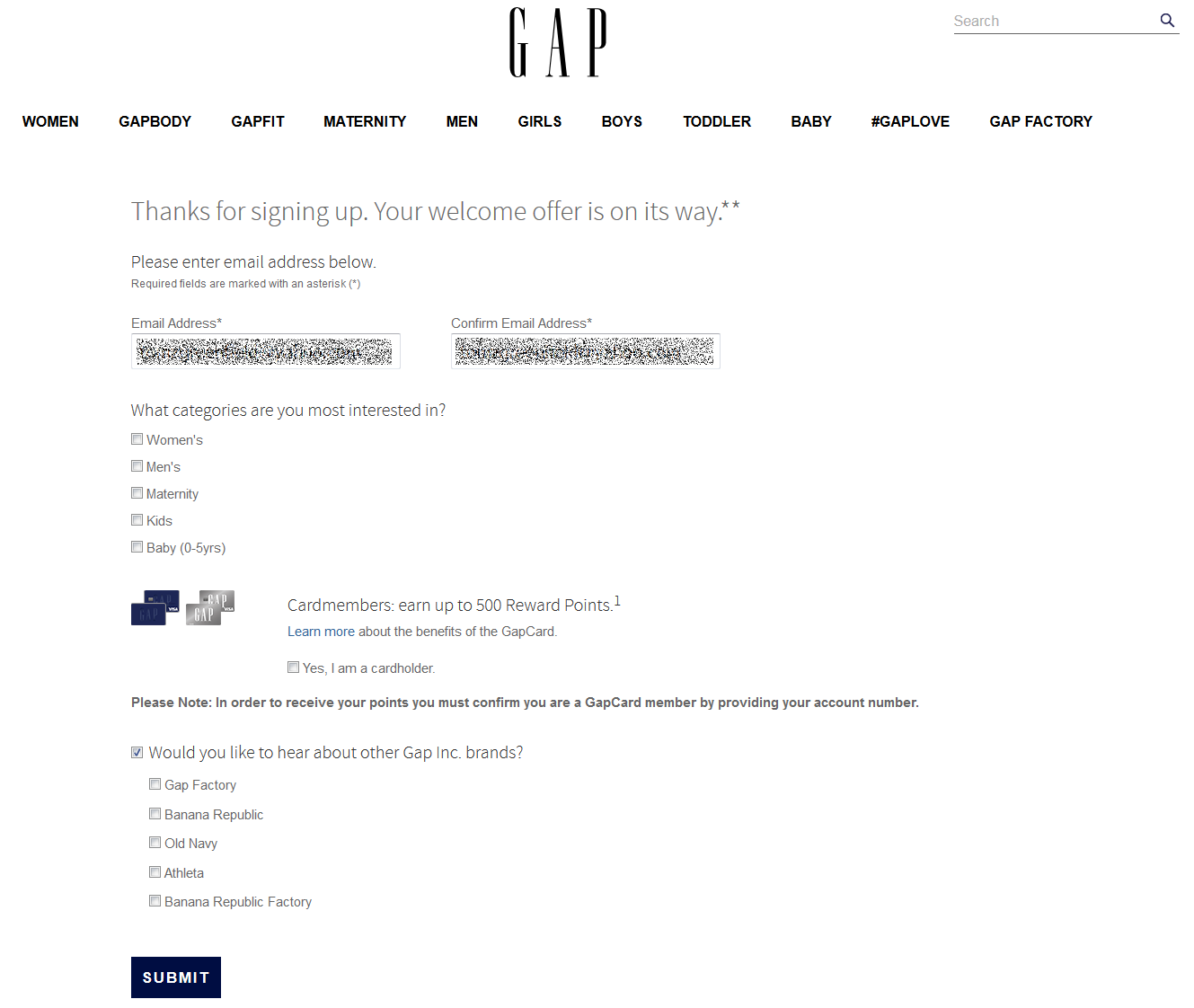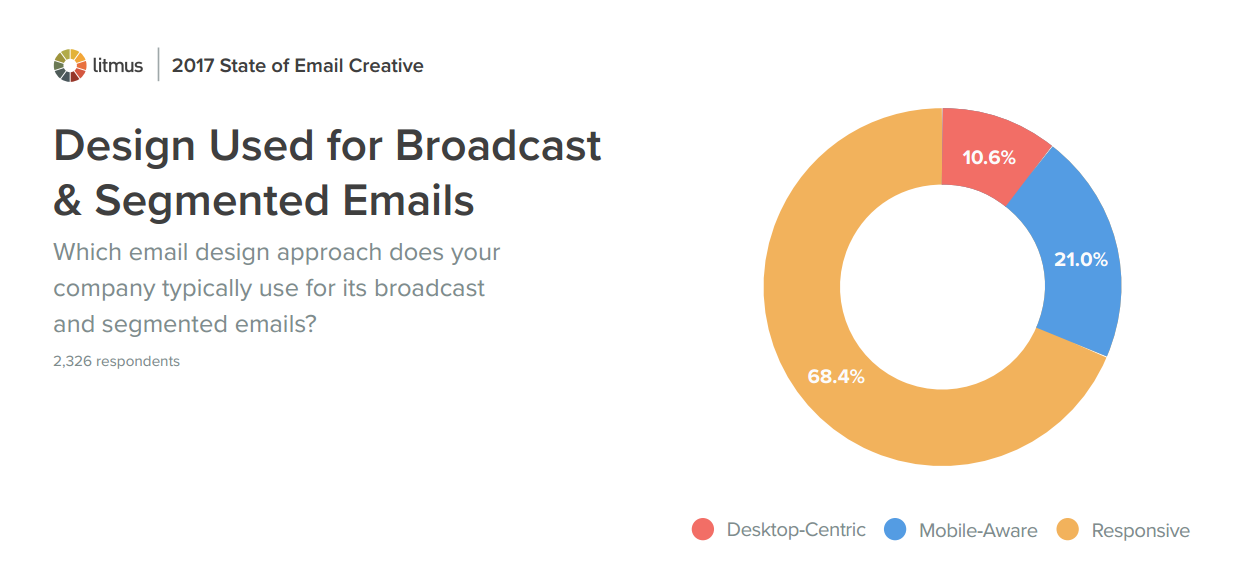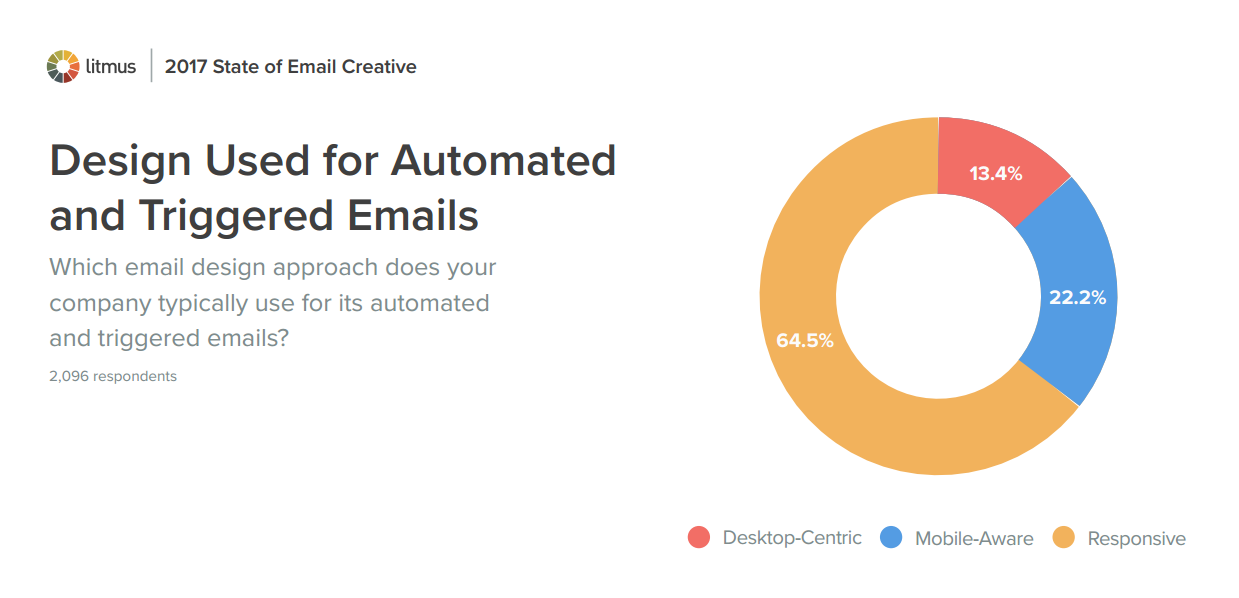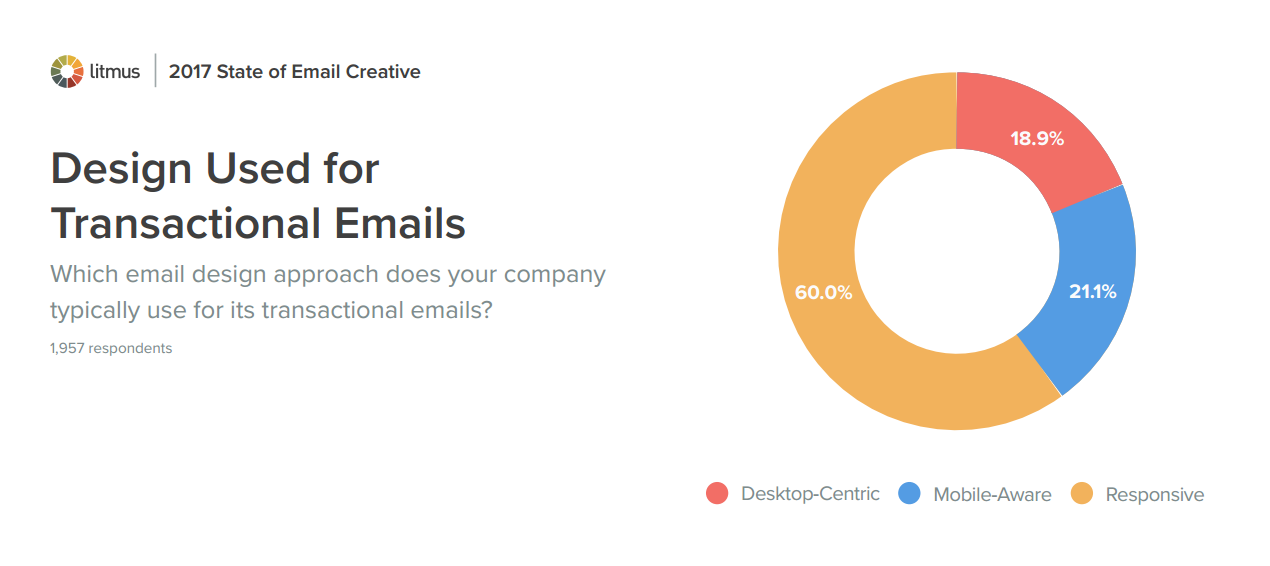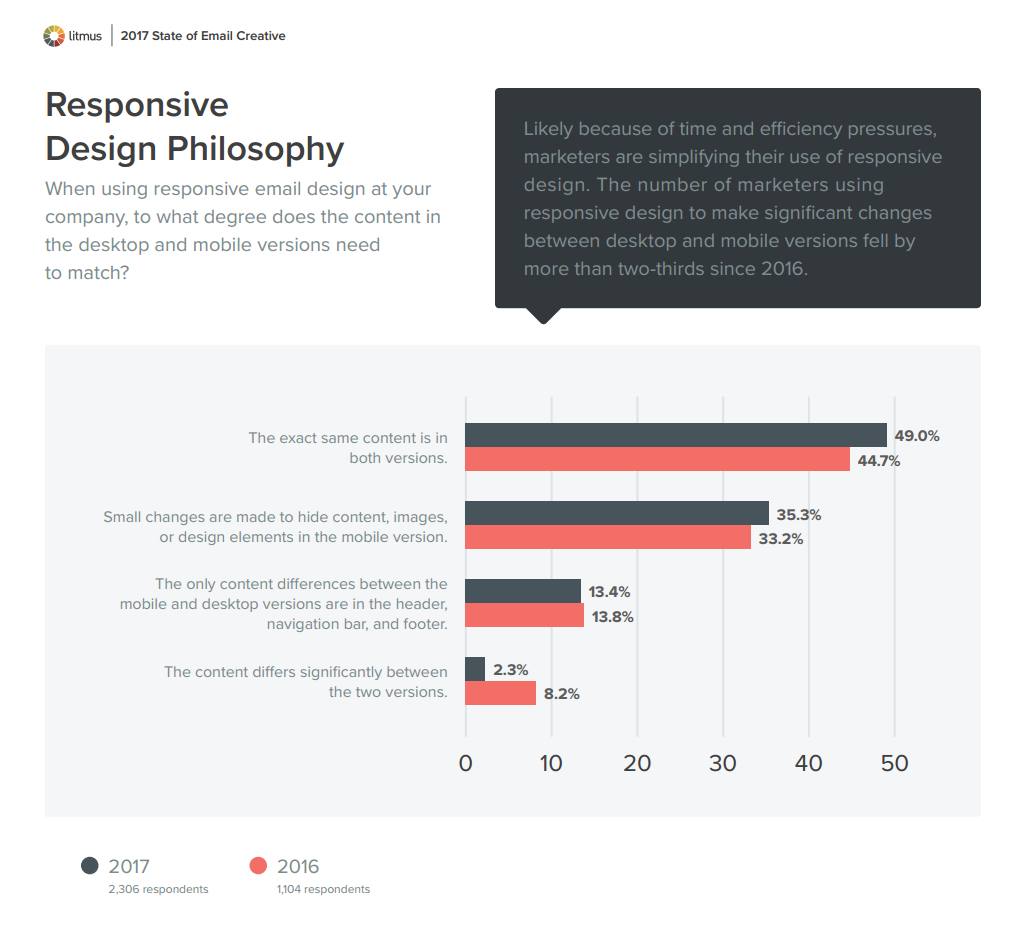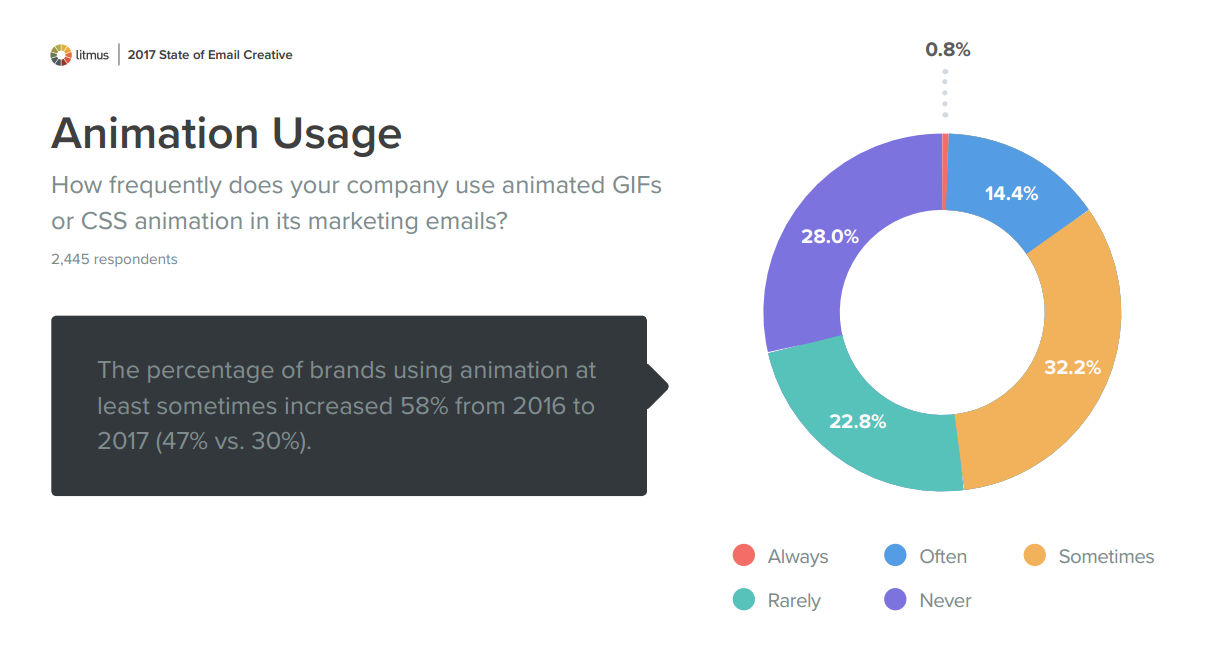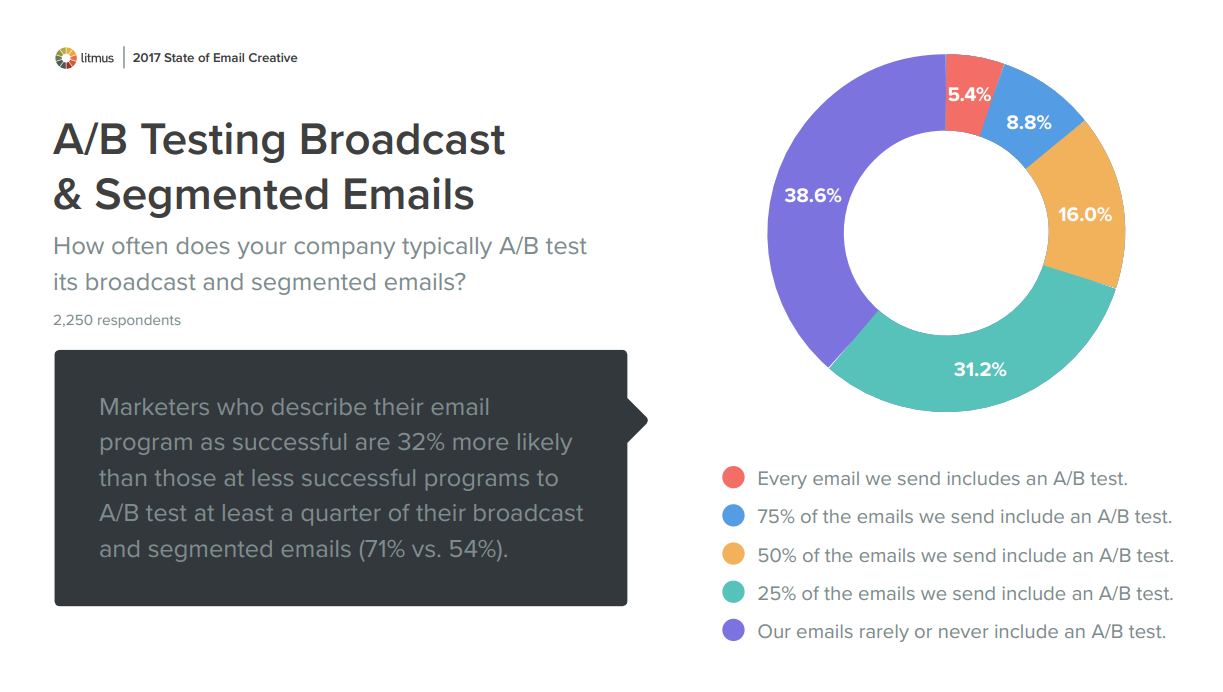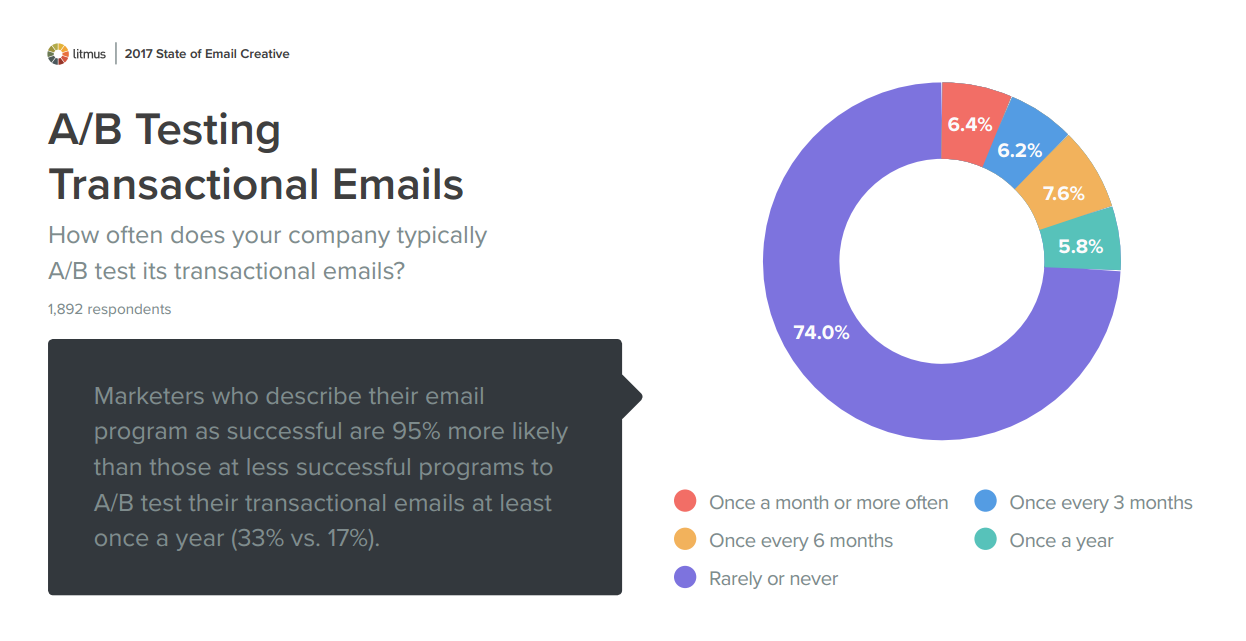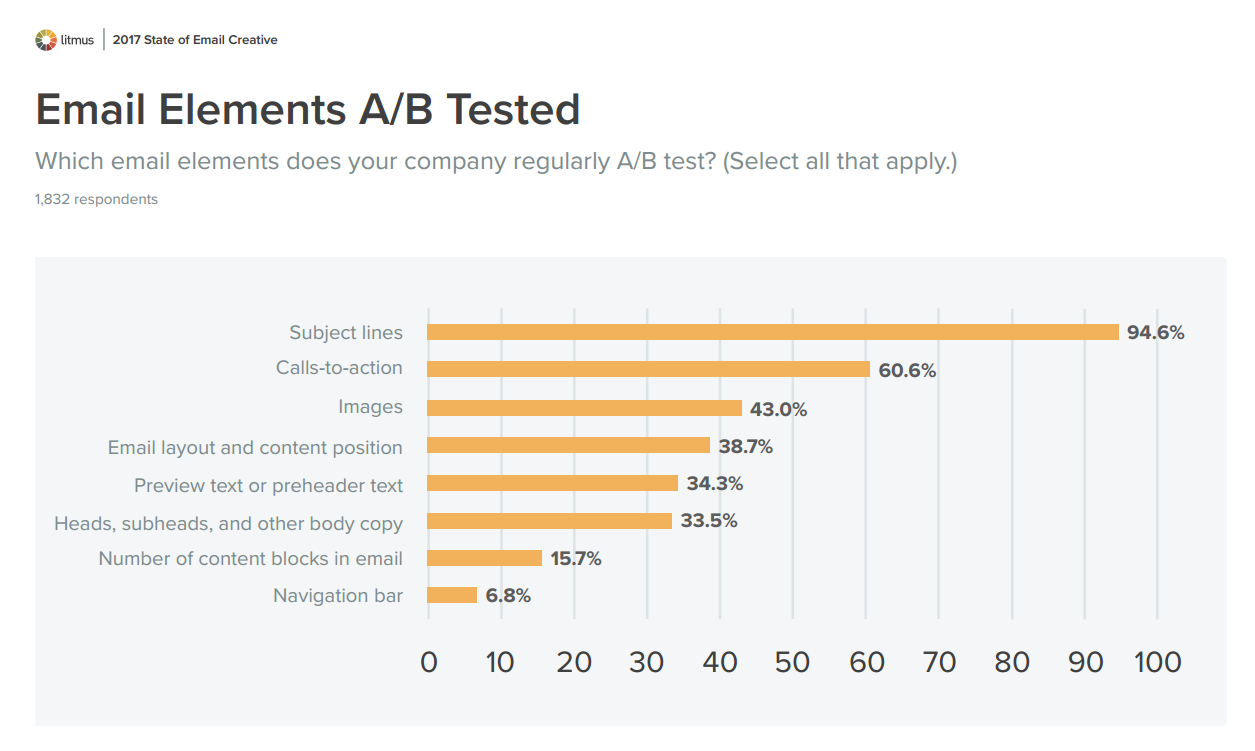More than 3,500 marketers responded to Litmus’ 2017 State of Email Survey, which asked about all aspects of the email marketing program and powered a year-long series of reports, webinars, and blog posts.
As we gear up to release the findings of our 2018 State of Email Survey, it seems like a fitting time to review the major findings from last year’s three major reports:
This presentation highlights the most interesting and actionable insights from those reports, including…
- The best ways to improve your email production process
- The subscriber acquisition sources that most endanger your deliverability
- The best ways to make your email creative more effective
Get More Insights from Litmus’ Research
Benchmark your email program against the practices of thousands of marketers worldwide, gain valuable insights, and explore trends in the blog posts, webinars, and research reports based on Litmus’ State of Email Survey.
The Best of the 2017 State of Email Survey Research Series
Litmus surveyed more than 3,500 marketers about all aspects of their email marketing programs, including how they produce and design their emails, attract subscribers, and maintain deliverability.
We published the results in our:
In this presentation, we share the most interesting and actionable insights from those three reports, including…
- The best ways to improve your email production process
- The subscriber acquisition sources that most endanger your deliverability
- The best ways to make your email creative more effective
State of Email Workflows
What are the most impactful changes you can make to your email workflow to improve quality and accelerate performance? Let’s talk about 3 ways…
Email Briefs
A description of the goal, audience, etc. of the email you’re making
Marketers who describe their companies’ email marketing programs as successful are 123% more likely than those at less successful programs to create an email brief for every email they produce (24.5% vs. 11.0%).
Your email brief should answer…
- WHO should get this message?
- WHAT action should subscribers take?
- WHY will they take that action?
- WHEN should they receive the message?
- WHERE are they likely to read the message?
- HOW will you measure this email’s success?
- IS this email part of a series of messages or a subscriber or customer journey?
- DO you have supplemental material that’s important to answering the other questions?
For an in-depth look at email briefs, check out How to Define the Goal of Your Next Email Marketing Campaign and download the Email Planning Workbook discussed.
Pre-send Checklists
A quality assurance list for your emails
Marketers who describe their companies’ email marketing programs as successful are 132% more likely than those at less successful programs to use an extensive pre-send checklist (28.1% vs. 12.1%).
What should your checklist include?
- Envelope content
- Preheader text
- Rendering
- Images (including retina optimization)
- ALT text (including styling)
- Links (including https)
- Link tracking
- Other tracking embeds
- Dynamic content
- Plain-text version
- Legal compliance
Marketers who describe their companies’ email marketing programs as successful are 17% more likely than those at less successful programs to test every email they send (61.4% vs. 52.6%).
For an in-depth look at what to include in your pre-send checklist, check out The Ultimate Email Checklist: 24 Things to Check Before You Send.
Intervention Visibility
Your ability to see and respond to email mistakes
Marketers who describe their companies’ email marketing programs as successful are more likely than those at less successful programs to say they’ve sent an apology email because of an email marketing mistake (53.7% vs. 46.6%) and an apology email because of a website problem, PR, or another issue (39.4% vs. 33.9%).
Why do successful programs make more apology-worthy mistakes?
- They send more emails.
- They send more complex emails.
- They have better visibility into performance, which alerts them to errors.
For an in-depth look at how to improve your visibility into mistakes and avoid them, check out The State of Email Marketing Mistakes.
Recap: Email Workflows
- Create email briefs for all emails.
- Use an extensive pre-send checklist.
- Get better visibility into errors.
State of Email Deliverability
The bad news is that being blacklisted and, in particular, being blocked, are fairly common.
Poor deliverability costs brands money. It results in direct costs from remediating blocks and blacklistings and—usually larger—indirect costs from not being able to reach all of your active subscribers and customers.
The good news: Marketers who describe their email programs as successful are only 19% less likely to have had their emails blocked in the past 12 months (31.6% vs. 38.8%). And successful programs are just as likely as other programs to be blacklisted.
Even though deliverability problems don’t stop email programs from being successful, that doesn’t mean that marketers shouldn’t do more to avoid blocks and blacklistings.
Deliverability problems are not a cost of doing business.
These situations are avoidable, as certain practices clearly lower email marketers’ risks, while others absolutely raise them—sometimes dramatically.
But the most impactful findings were around subscriber acquisition sources. We looked at those used by brands that suffered recent deliverability problems and those that hadn’t.
Let’s talk about the 3 most problematic subscriber acquisition sources and why they’re so dangerous:
- List rental
- Co-registration
- List purchase
List Rental
In Email Marketing Rules, I describe how list rental should work:
“If you rent a list from a company, you should supply the company with the message that you want sent. The list owner then sends that message on your behalf to their list—which you never see—using their usual name and email address, not yours.
The unsubscribe link included in this email is an opt-out for the list owner only, not you. The list owner typically includes a tag in the subject line and a message at the top of the email indicating that the message is from one of their partners.
This arrangement helps ensure that your message will be well received by the recipients, because the list owner would suffer unsubscribes and spam complaints if they sent a message from a partner that wasn’t a good fit for their list.”
We polled more than 300 marketers and found evidence of lots of confusion around how a list rental should be done. Some list rentals were essentially list purchases.
Co-registration
def. — When a brand allows visitors to their website, users of their app, etc. to sign up to receive emails from third-parties, often while or after signing up for email from the brand
Anytime someone is signing up to get your emails on a property that you don’t control, signup quality declines significantly. Co-registration leads to confusion and regret, unless the brand is a sister brand.
List Purchase
What are the risks of buying a list?
- Violation of ESP’s terms of service
- Hard bounces
- Spam complaints
- Spam traps
- Low engagement
- Negative word of mouth
For an in-depth look at the issues with these subscriber acquisition sources, check out The 5 Most Problematic Subscriber Acquisition Sources: Are they redeemable?
Recap: Email Deliverability
- Only work with vendors who do list rental the right way
- Use co-registration only with sister brands
- Don’t buy lists!
State of Email Creative
How can you improve your email creative so that it’s more engaging and more effective? Let’s discuss about 3 ways to do that…
Responsive Design
Emails optimized for desktops and mobile
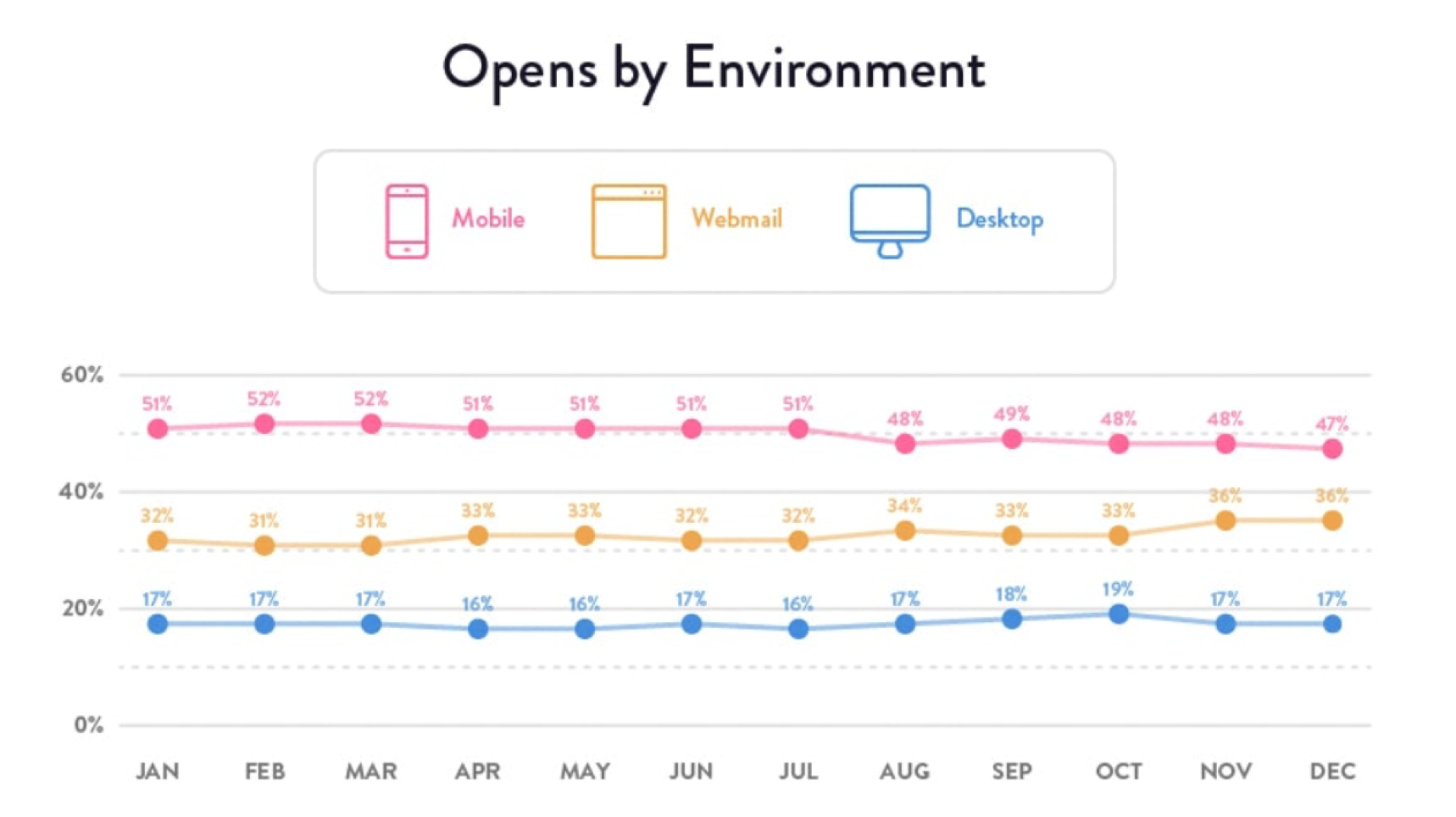
A strong majority of brands use responsive design for their emails, although adoption is lower for automated and transactional emails than for broadcast and segmented emails.
Most brands are using responsive design to create minor changes between the desktop and mobile versions of their emails.
For an in-depth look at responsive email design, check out Understanding Responsive and Hybrid Email Design.
Animated GIFs
Image file that displays multiple images over time
Motion is powerful because it draws the eye. It’s attention-grabbing. Support for video in email is decent, but support for CSS animation is stronger and support for animated GIFs is nearly universal.
Animated GIF usage is much stronger among B2C brands. Our 2017 State of Email Creative research shows 38% of B2B brands never use animated GIFs in their emails, compared to 22% of B2C brands.
That’s unfortunate because B2B brands have great opportunities to use animation to demonstrate products and concepts, particularly software companies.
Tips for using animation:
- Make the first frame meaningful in case animation is blocked
- Keep loaded weight (code + images) to 1MB. Definitely no more than 2MB.
- Minimize number of GIFs per email
For an in-depth look at how to use animation effectively, check out our Guide to Animated GIFs in Email.
A/B Testing
Determining which of two versions performs better
Analytics allow marketers to listen to their subscribers and collect feedback. A/B testing allows marketers to listen to their subscribers in a much more targeted way and iterate on feedback much more quickly.
Brands are much more likely to A/B test their broadcast and segmented promotional emails than they are their automated and transactional emails. However, successful email programs are more likely to test their automated and transactional emails.
39% of email programs generate 25% or more of their email marketing revenue from automated and transactional emails; 13% generate 50% or more. That trend makes A/B testing these emails even more critical.
Most email A/B testing is focused on high-yield elements like subject lines and calls-to-action. However, there are many opportunities further down the value chain.
When doing email A/B testing:
- Focus your email A/B testing efforts on campaign elements that are most likely to move the needle on performance, such as subject lines, calls-to-action, hero images, and headlines and subheads.
- Understand whether your testing will get you closer to a local or global maximum. Janie Clarke of Indeed recommends A/B testing small, medium, and large changes to find both your local and global maximums.
- Have a clear hypothesis.
- Choose a testing victory metric that is aligned with your campaign goal.
- Use test segments of active subscribers.
- Test similar groups of subscribers.
- Ensure your testing groups are big enough to produce statistically significant results. Consider abtestguide.com/calc/
- Use holdout groups, when appropriate.
- Create test plan and record test results.
- Confirm results of tests.
- Share the results of your email A/B tests with other channel owners at your company.
For an in-depth look at how to use A/B testing effectively, check out our 13 Email A/B Testing Mistakes that Limit Your Success.
Recap: Email Creative
- Mobile optimize all your emails
- Use animation more often
- A/B test your automated and transactional emails
For an in-depth look at all of the results from our survey, check out the reports, webinars, infographics, and blog posts in our State of Email Survey Research Series.
The post The Best of the 2017 State of Email Survey Research Series appeared first on Litmus Software, Inc..
![]()

